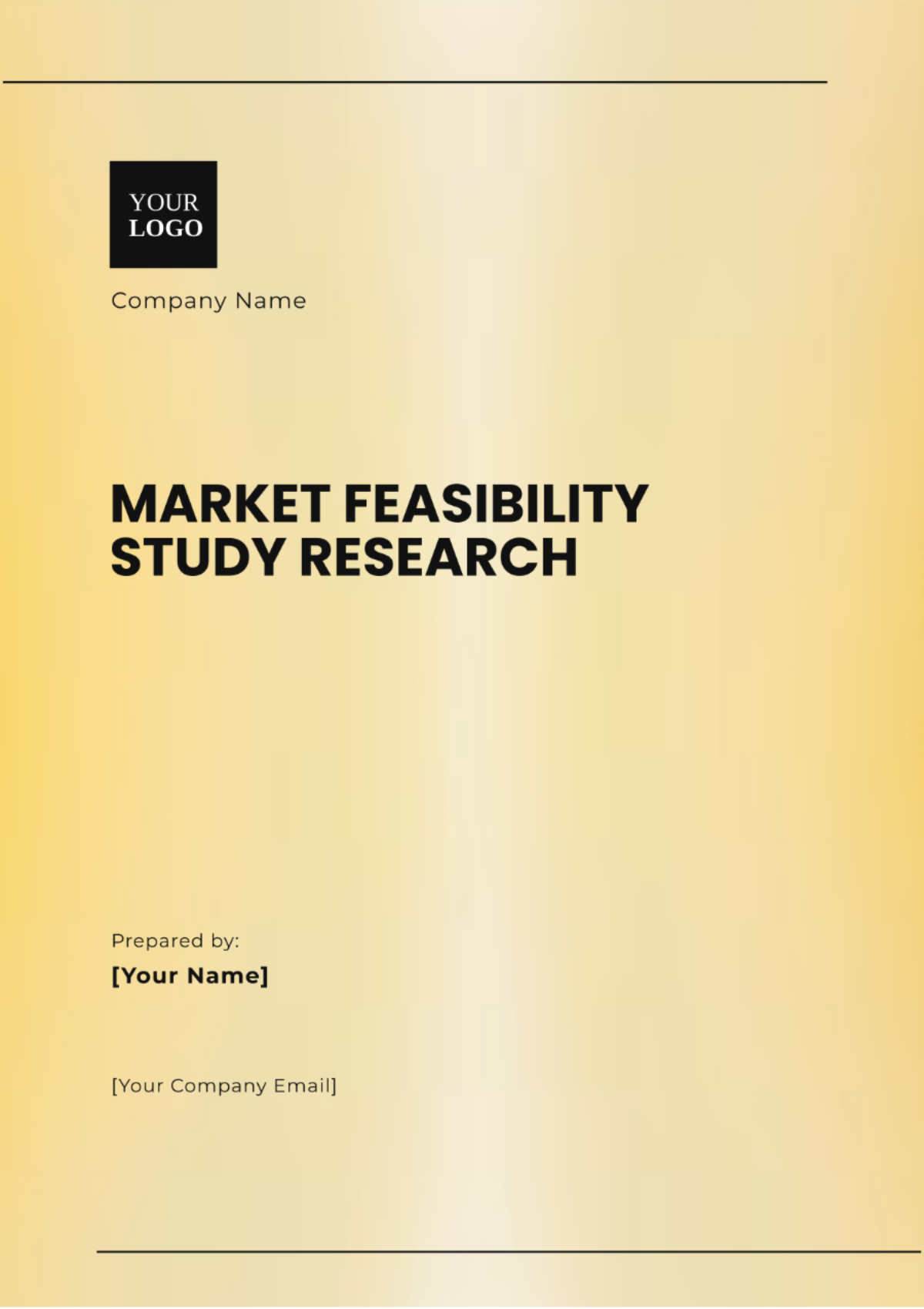Market Feasibility Study
Prepared By: [YOUR NAME]
Company Name: [YOUR COMPANY NAME]
I. Executive Summary
This Market Feasibility Study evaluates the potential success of the EcoSmart Water Bottle, designed to be a game-changer in the sustainable products market. The analysis shows a promising opportunity with a projected growth in consumer demand for eco-friendly products. Key recommendations include targeting eco-conscious millennials and leveraging unique sustainability features to gain market share.
II. Market Overview
The sustainable products market is expected to grow significantly over the next decade, reaching $300 billion by 2055. Factors driving this growth include increased environmental awareness and government regulations promoting sustainability. This sector is anticipated to grow at an annual rate of 8%, making it a fertile ground for innovative products like the EcoSmart Water Bottle.
A. Target Market Analysis
Our target market includes environmentally conscious consumers aged 18-35, with a particular focus on urban dwellers who value sustainability. This segment is projected to grow by 10% annually, reflecting a strong and increasing demand for eco-friendly products. Consumer surveys indicate a high preference for products that combine functionality with environmental responsibility.
B. Target Market Growth Data and Rate:
C. Competitive Analysis
The competitive landscape features major players such as HydroFlask, S'well, and Brita. While these brands have established market positions, the EcoSmart Water Bottle distinguishes itself with features such as a built-in UV sterilizer and biodegradable materials. Analyzing competitors’ strengths and weaknesses helps us refine our strategy to better meet market needs.
D. Market Share Data
E. Market Demand Analysis
The demand for the EcoSmart Water Bottle is forecasted to capture a market share of 5% by 2055, driven by a growing trend towards eco-conscious living. Consumer interest surveys show a 70% preference for products with environmental benefits, supporting the product's market potential. This positions EcoSmart as a viable and attractive option for modern consumers.
F. Financial Analysis
The initial investment for the EcoSmart Water Bottle is estimated at $2 million, with projected annual revenues reaching $15 million by 2055. Profit margins are expected to increase from 15% to 25% as the product gains market traction. The break-even point is anticipated to be reached within 2 years, supported by strong consumer interest and efficient production.
III. SWOT Analysis:
Strengths | Weaknesses |
Innovative Design: The EcoSmart Water Bottle stands out with its UV sterilizer and biodegradable materials. | Higher Production Costs: Advanced features and sustainable materials make these water bottles costlier to produce than conventional ones. |
Strong Sustainability Credentials: Focuses on eco-friendly practices and materials, meeting consumer demand for sustainable products. | Initial Market Entry Barriers: Challenges such as establishing brand recognition and distribution channels in a competitive market. |
High Consumer Demand: Showed strong appeal and market potential, especially among eco-conscious consumers. | Limited Production Capacity: Current manufacturing capabilities may limit the ability to scale up production quickly to meet high demand. |
Opportunities | Threats |
Expanding Market for Eco-Friendly Products: Increasing consumer demand for sustainable solutions presents a growing market opportunity. | Intense Competition from Established Brands: Major competitors like HydroFlask, S'well, and Brita have strong market positions and brand loyalty. |
Potential Partnerships with Environmental Organizations: Opportunities to collaborate with organizations that promote environmental sustainability, enhancing brand credibility and reach. | Fluctuating Raw Material Costs: Variability in the costs of sustainable materials could impact profit margins and production planning. |
Technological Advancements: Innovations in materials and manufacturing processes could further enhance the product’s appeal and efficiency. | Changing Regulatory Environment: Potential new regulations on materials and sustainability practices could affect product design and compliance. |
IV. Marketing and Sales Strategy
Our marketing strategy includes leveraging social media campaigns, influencer partnerships, and eco-focused events to build brand awareness. Sales efforts will target online platforms and retail stores specializing in sustainable products. Competitive pricing combined with promotional discounts will drive initial consumer adoption.
V. Operational Plan
The operational plan includes partnering with eco-friendly manufacturers and establishing a streamlined supply chain to ensure product availability. Key resources involve a dedicated team for product development and quality control. Operational goals focus on achieving efficient production and maintaining high product standards.
VI. Risk Assessment
Potential risks include intense competition from established brands, supply chain disruptions, and shifts in consumer preferences. Mitigation strategies involve continuous market research, diversifying suppliers, and adapting marketing strategies based on consumer feedback. Regular reviews will be conducted to address and manage emerging risks.
VII. Conclusion and Recommendations
The feasibility study indicates that the EcoSmart Water Bottle has significant potential for success in the growing sustainable products market. Recommended actions include focusing on targeted marketing efforts and leveraging unique product features to differentiate from competitors. Ongoing adaptation and strategic planning will be essential for long-term success.
Research Templates @ Template.net






























